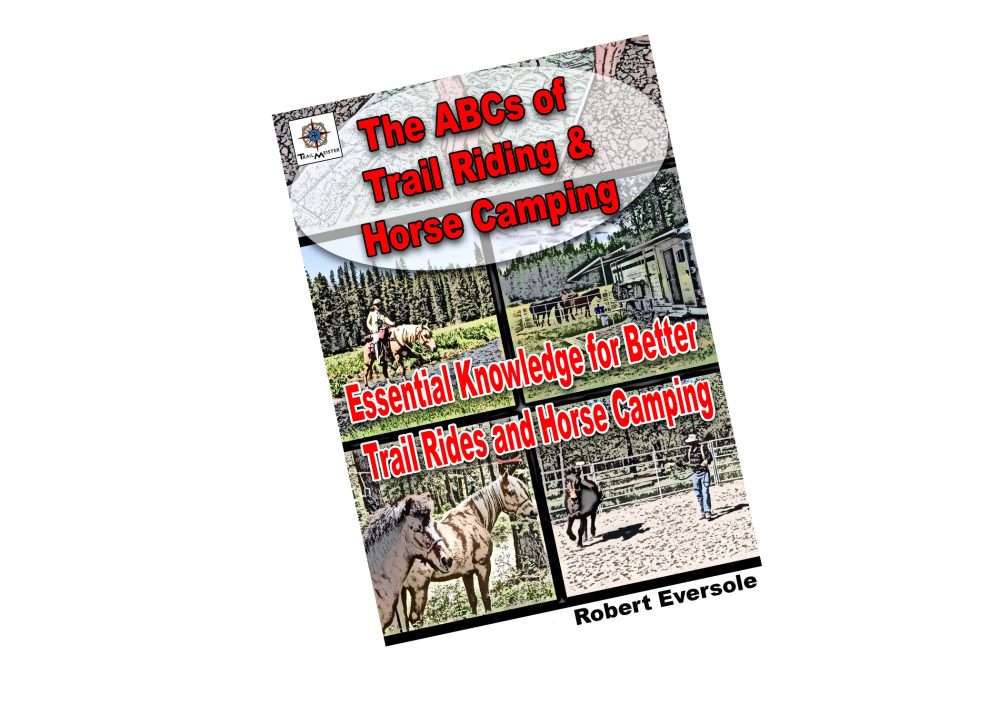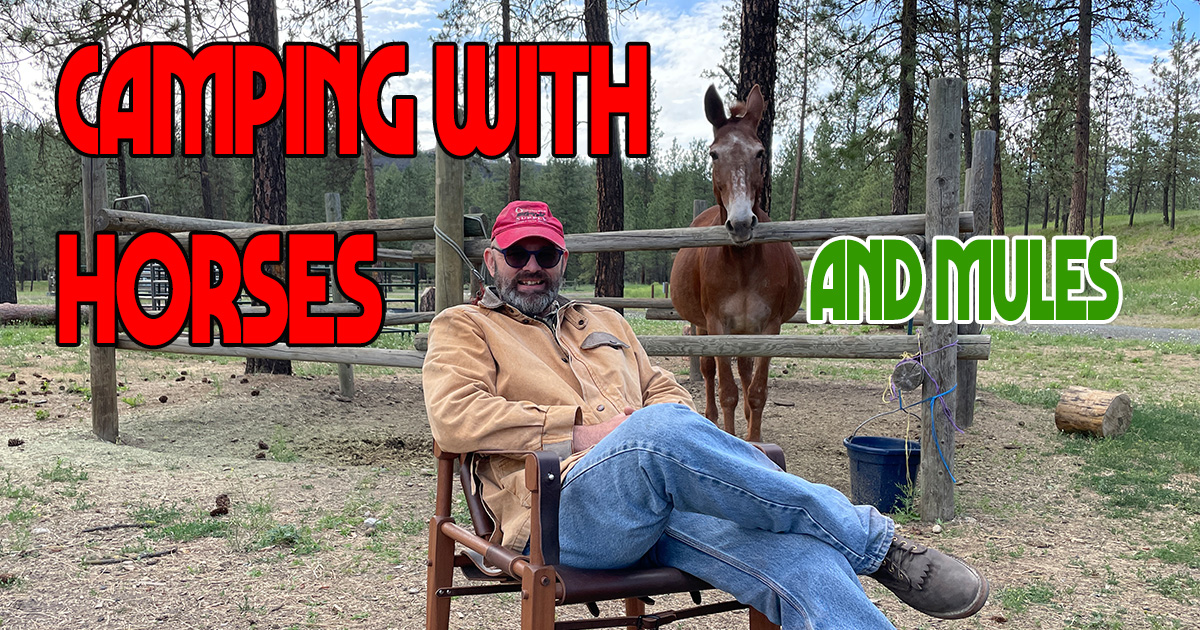The mornings are crisp with frost, and my favorite trails are hidden under a carpet of golden leaves. As I pack away the gear for winter, I can’t help but think about next year’s adventures. Now’s the time to start planning.
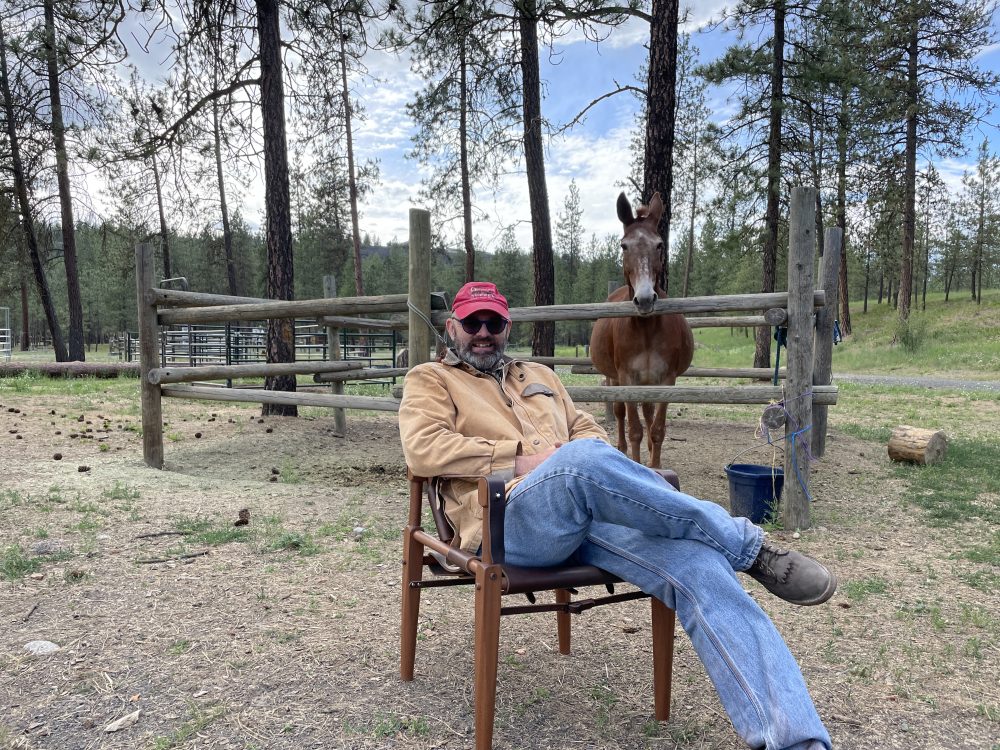
Camping with horses might initially seem overwhelming, with its many moving parts and considerations, but it doesn’t have to be. If you break the process down into manageable steps and start, you’ll find your way. Like any camping experience, you’re planning around three essential needs: food, water, and shelter—for both you and your horse. The complexity of meeting those needs is up to you. You can ease into it by choosing a fully equipped facility or eventually challenge yourself with a more rugged backcountry trip.
Starting small and gradually working your way up is a key strategy for success in horse camping. Each incremental step outside your comfort zone not only leads to growth in your horsemanship and camping skills but also builds a strong foundation for future adventures.
Preparing Your Horse
Regardless of where you choose to camp, being away from home will be a valuable lesson for your horse. It will teach the critter to adapt to new environments, whether that means adjusting to a different routine, getting along with unfamiliar horses, or testing the boundaries of his enclosure. Each trip will give you new insights into your horse’s habits when away from the familiar.
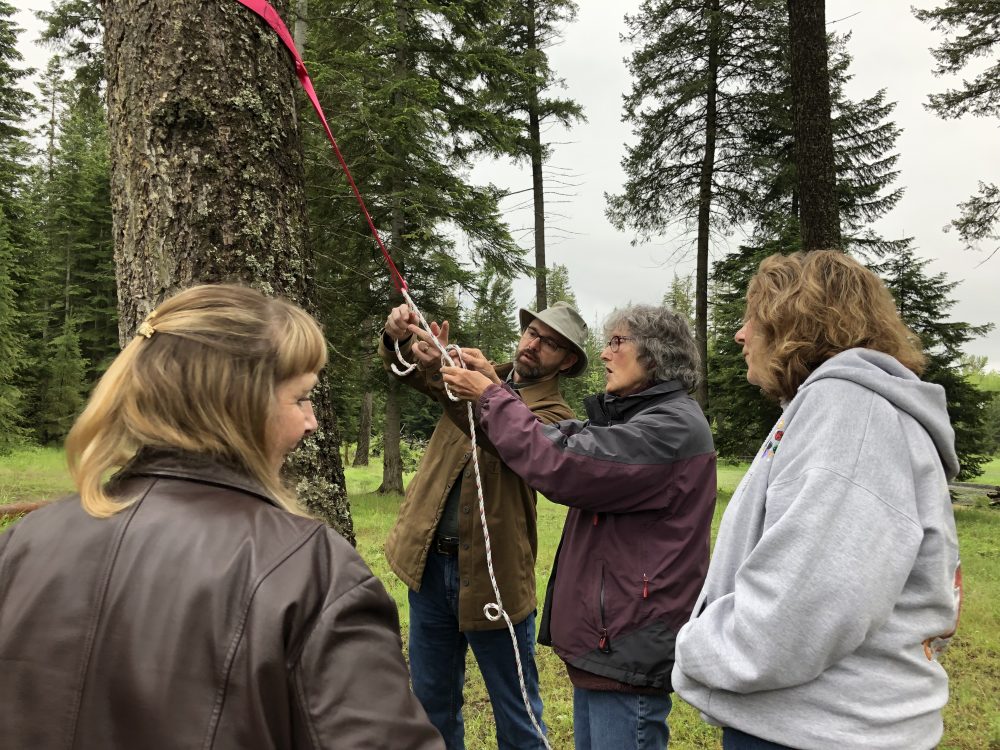
You’ll also learn the best containment system to keep your mischievous toddler out of trouble. Some horses test portable corral panels, so it may be better to train them to highlines. If your horse will be housed near others, ensure they’re compatible. Don’t hesitate to move your horse if necessary.
As you learn how to prepare for life on the trail, so is your horse. This mutual learning process is what makes horse camping so rewarding. That’s why starting small—right in your own backyard—is a great way to introduce both of you to the process.
Beginning: The Fundamentals
Camp at home. Yes, you read that correctly. For your first horse camping trip, stay home. This familiar environment provides a secure and controlled setting to practice packing for an overnight trip while giving your horse a safe, controlled environment. My first camping trip of every year is in my back pasture. Every year, I’m thankful for the tune-up in a secure environment where failure is an option.
Pro Tip: After each trip, keep track of what you needed, what you forgot, and what made the experience smoother. Over time, you’ll refine your system and become more efficient in preparing for both the trail and camp. Here’s a checklist to help you get started – https://www.trailmeister.com/trail-rider-check-list/
Intermediate: Established Campgrounds with Corrals
Once you’re comfortable camping at home, it’s time to up the ante by traveling to an established equine camping facility, preferably with a corral. You’ll sleep in a tent or your trailer’s living quarters while your horse stays nearby. This gives you a taste of camping while still eliminating the worry of horse containment overnight—one of the biggest hurdles in horse camping.
Some camps I adore that fit this level include Oregon’s Quinn Meadow and Missouri’s Brushy Creek Lodge and Resort. Both offer fabulous amenities while providing safe corrals for your furry kiddos.
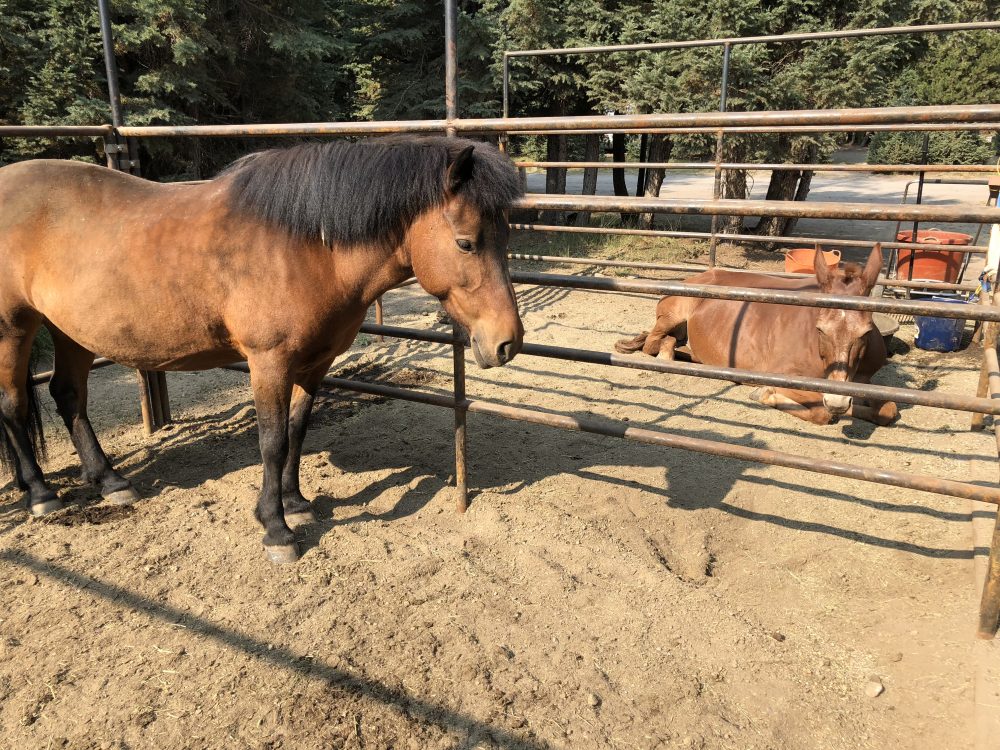
Advanced: Established Campgrounds without Corrals
This level moves you slightly further from the comforts of civilization, but you’ll still have your vehicle close by, making it easier to manage the necessities. The most significant shift here is securing your horse overnight. Options include using a highline or setting up a portable corral. I’m a fan of highlines for many reasons, but if you’re not, portable corrals can also keep your critters out of mischief. Both horse containment methods require you to practice at home first.
Practice setting up and securing your Highline at home, ensuring your horse is comfortable and familiar with it before heading out. Here’s a link to a video detailing how to set up a safe and effective Highline – https://www.trailmeister.com/a-better-highline/
Horse Camps that I’m fond of in this category include Washington’s Haney Meadow and Ohio’s Hueston Woods State Park Horse Camp.
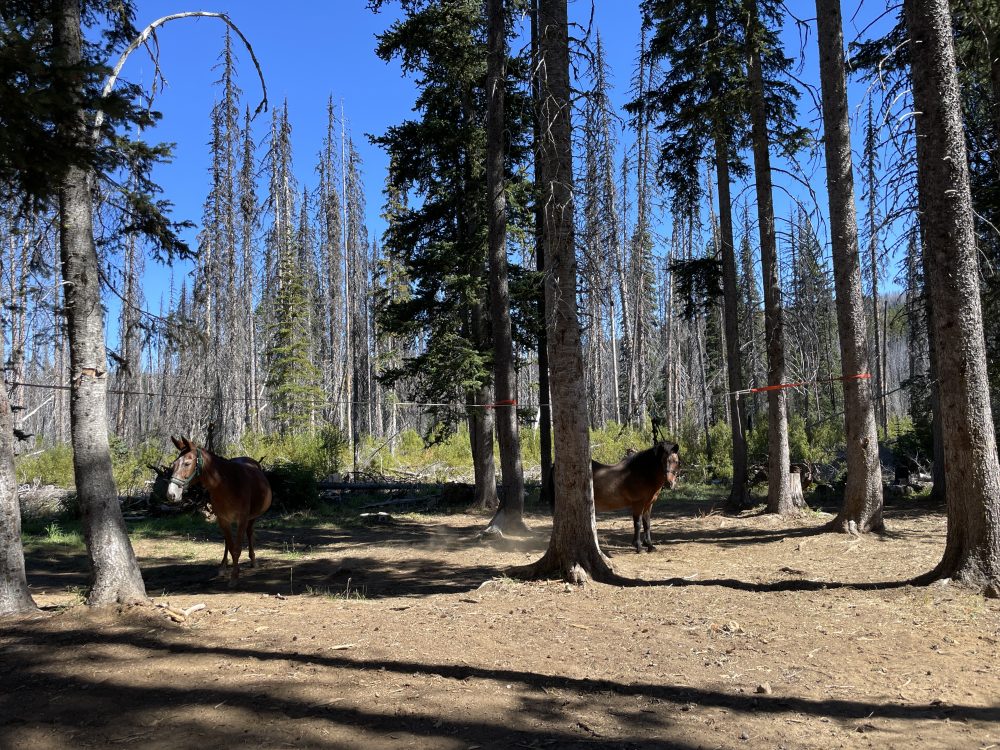
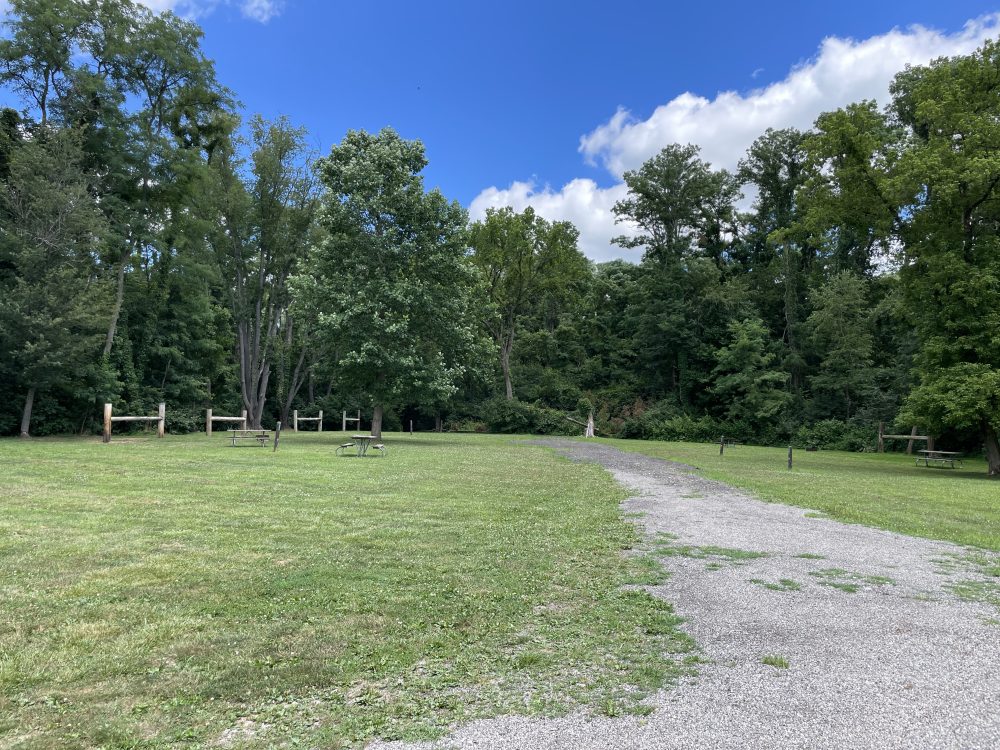
Pro: Wilderness Camping
Wilderness camping is the ultimate goal in horse camping, the “pro level”— trips in Capitol W wilderness areas. It requires plenty of preparation and is a true test of your skills and your horse’s abilities. At this stage, you rely entirely on what your animals can pack, making it a challenging yet rewarding experience.
Wilderness camping also means finding natural food and water sources for your horse(s). Before heading out, research the area beforehand and talk to experienced packers, such as local Back Country Horsemen groups or park rangers.
Notable wilderness areas well worth a visit include Montana’s Bob Marshall Complex and Oregon’s Eagle Cap.
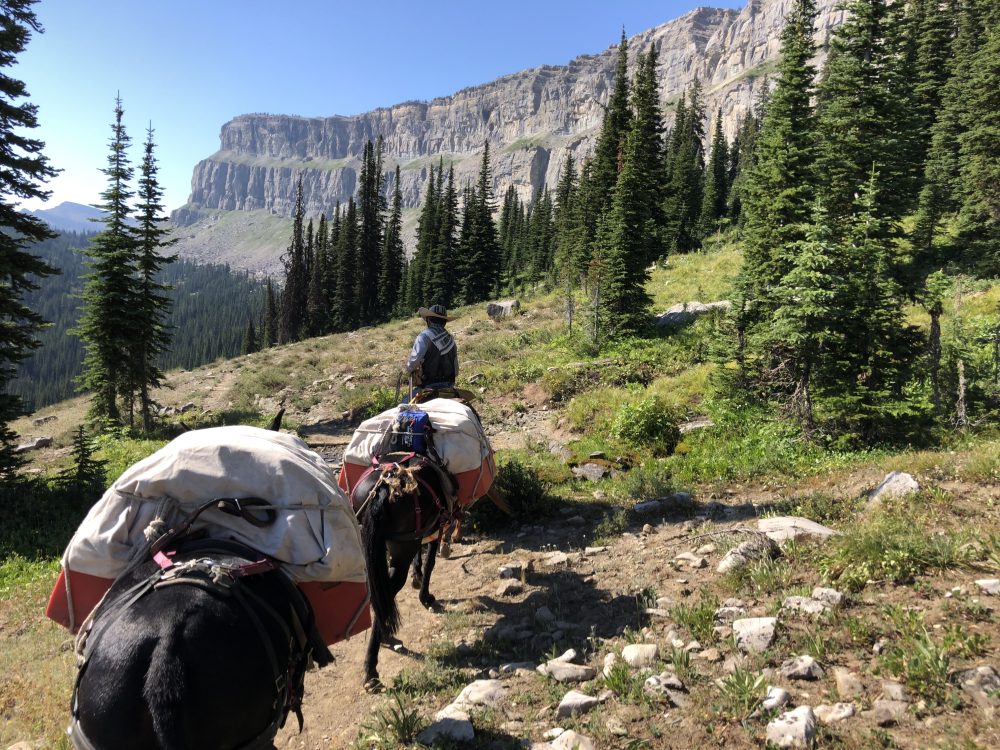
The key to horse camping success is working your way up, gradually building your skills and confidence—both in yourself and your horse. Start simple, stay organized, and embrace each step of the journey. Now is the perfect time to start working towards those bucket list adventures.
For more thoughts on camping with equines, buy a copy of the best-selling book The ABCs of Trail Riding and Horse Camping on Amazon or visit me at www.TrailMeister.com.
